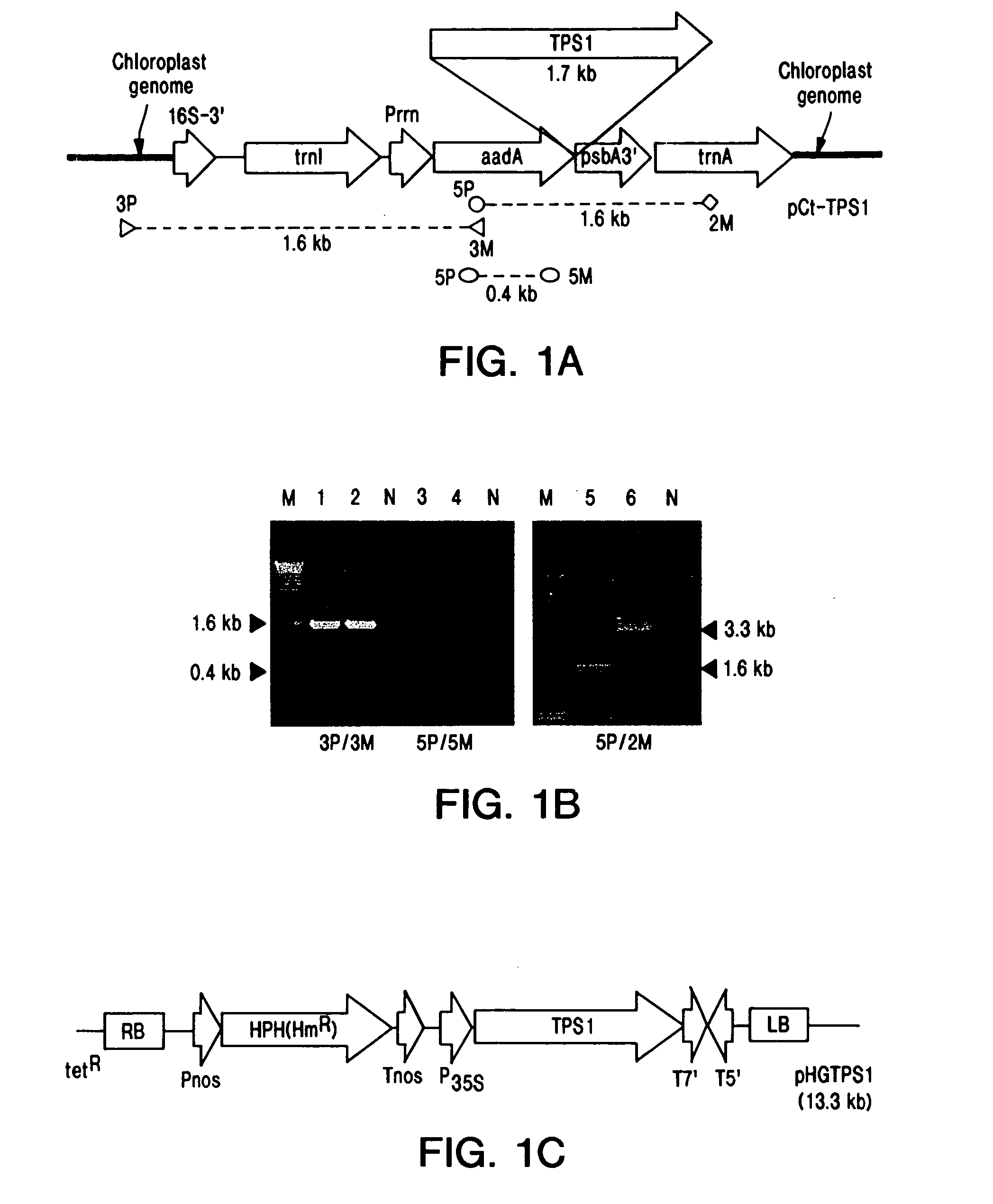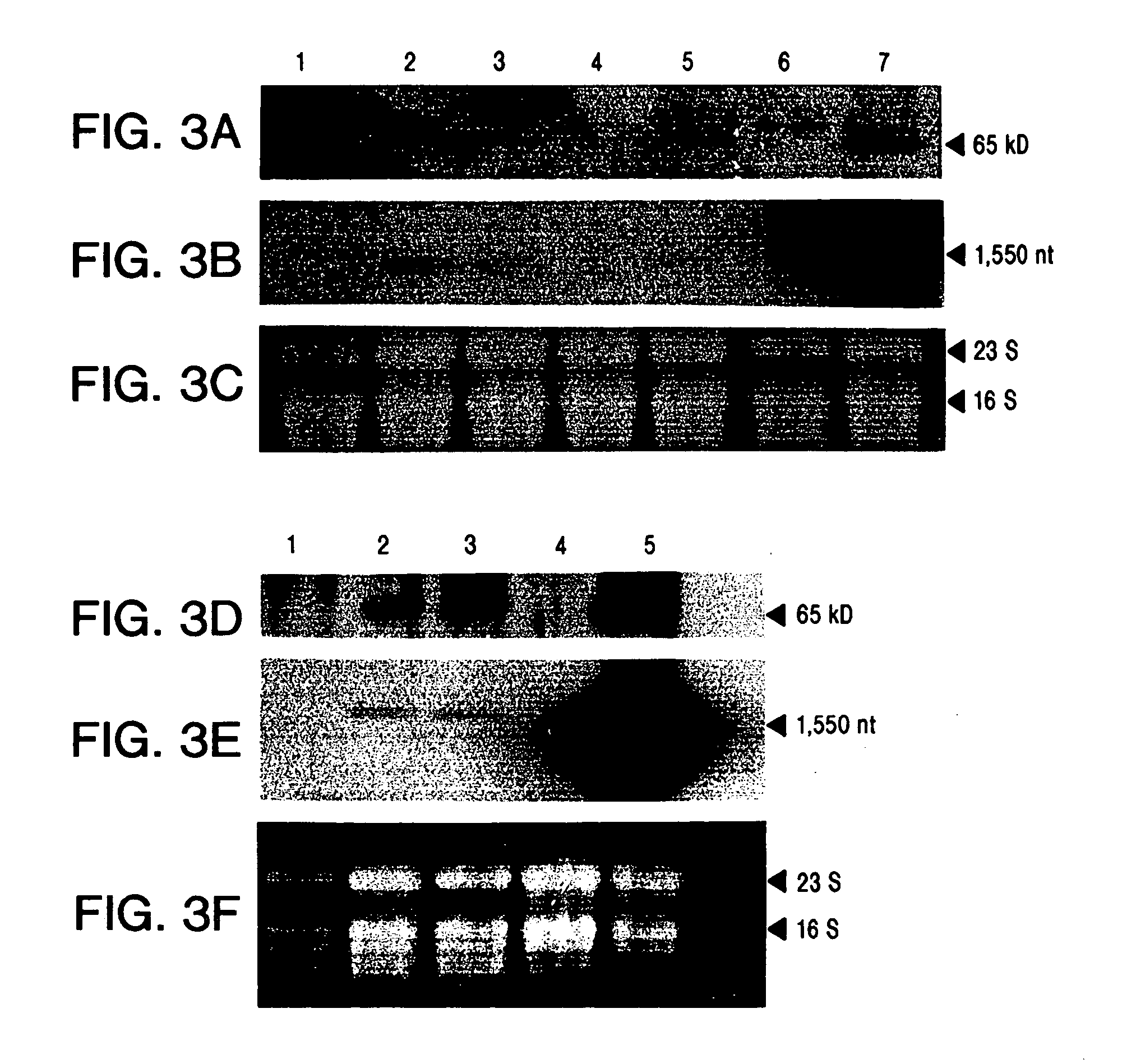Genetic engineering of drought tolerance via a plastid genome
- Summary
- Abstract
- Description
- Claims
- Application Information
AI Technical Summary
Benefits of technology
Problems solved by technology
Method used
Image
Examples
Embodiment Construction
[0079] Plant, A. tumefaciens and E. coli culture: For transformation experiments, Nicotiana tabacum var. xanthi and Burley were grown in MS medium in the Magenta culture box (Sigma, USA). For drought tolerance assays of transgenic tobacco plants, the rooted young plants were transferred to pre-swollen Jiffy-7 peat pellets (Jiffy Products, Norway) inside the greenhouse. Plants used for enzyme assays were grown and kept in Magenta culture boxes. Seven or 8 leaf stage plants were used for enzyme assays. Two to three-week old young transgenic tobacco plants were used for stress analyses. (Agrobacterium tumefaciens strain LBA4404 was grown in the YEP medium at 29.degree. C. In a shaking incubator. Other E. coli strains were cultured and maintained as described in Sambrook et al. Plasmid construction and antibody production: For hyper-expression of the TPS1 in E. Coli for antibody production, the yeast TPS1 gene was cloned into plasmid pQE30 (Qiagen) and subsequently transformed into E. c...
PUM
| Property | Measurement | Unit |
|---|---|---|
| Stress optical coefficient | aaaaa | aaaaa |
Abstract
Description
Claims
Application Information
 Login to View More
Login to View More - R&D
- Intellectual Property
- Life Sciences
- Materials
- Tech Scout
- Unparalleled Data Quality
- Higher Quality Content
- 60% Fewer Hallucinations
Browse by: Latest US Patents, China's latest patents, Technical Efficacy Thesaurus, Application Domain, Technology Topic, Popular Technical Reports.
© 2025 PatSnap. All rights reserved.Legal|Privacy policy|Modern Slavery Act Transparency Statement|Sitemap|About US| Contact US: help@patsnap.com



